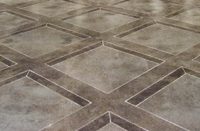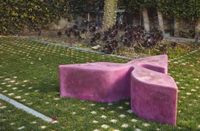 There are many molding compounds available, so it’s important to get one that’s appropriate for the application at hand.
There are many molding compounds available, so it’s important to get one that’s appropriate for the application at hand.
The hardness of the rubber compound is what will determine whether the product is right for your project or not. Rubber’s hardness is measured in durometers. For an example, stamping mats are typically made of a relatively high-durometer rubber, somewhere in the 80-90 range. For a high-detail mold, you’re going to start with a silicone rubber at a much lower durometer, somewhere in the range of 20 to 60.
There are also several different materials that molding compounds can be made from, which can affect your decision. If you’re working from clay or another model material that might have moisture in it, you’ll want a polysulfide rubber compound. For a fully cured concrete model, on the other hand, look for urethane rubber, tin-cured silicone or silicone rubber molding products.
Finally, you’ll want to make sure the product you choose is the right consistency for brushing onto your model, since that’s the easiest application method for ornamental work. Some silicone rubbers may require a thixotropic additive to make it brushable, but many mold compound manufacturers make products specifically formulated for brush application.















